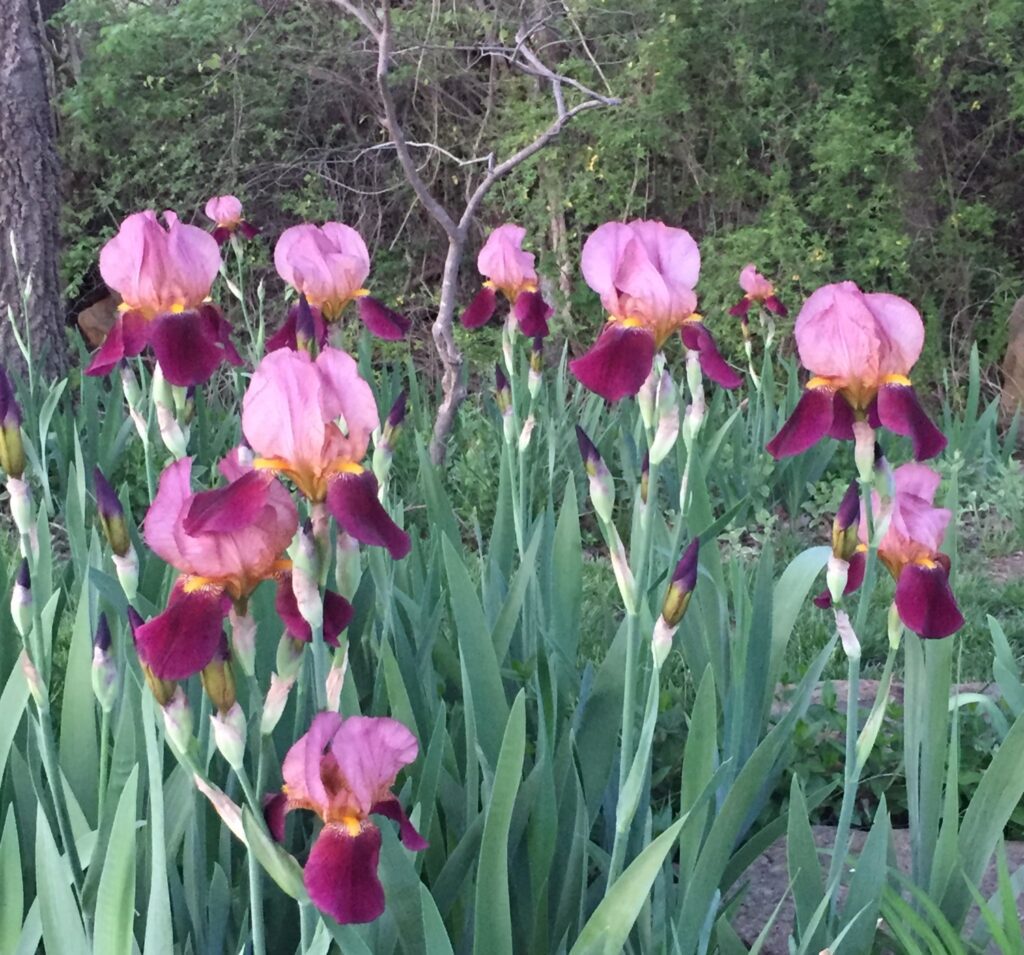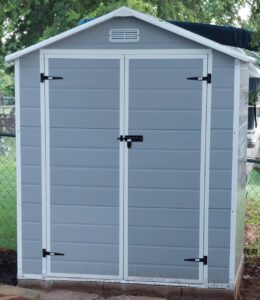By Kathy Berryhill
Creek County Master Gardener
Even though our temperatures are still quite warm, fall is approaching. Waking up to cooler mornings and noticing that our days are growing shorter are all sure signs of a season change. For many of our perennial plants, fall is the time to transplant and/or divide. Spending time in an iris bed now will encourage the blooms that brighten an April garden. Irises give us beautiful color when many plants are just beginning their growth.

Not many plants are as easy to grow as the iris. They prefer about 6+ hours a day in a well-drained area. Giving them a low nitrogen fertilizer twice a year helps to encourage growth and blooms. Summertime care for the iris involves cutting off the flower stalk. This prevents the plant from spending energy on the fading blooms. The leaves should remain until freezing temperatures approach to provide a source of photosynthesis for the plant. In our area, the leaves can be cut to about 3” toward the end of October. To help prevent disease, always remove spent foliage and leaves.
Over time, an iris bed will quit providing blooms. The most common reason for the lack of blooms is due to overcrowded roots. Irises have a bulbous root system called “rhizomes.” Rhizomes multiply each year and become crowded and overgrown. This crowding will cause the plant to quit performing. Most Iris beds need replanting about every 3-4 years to encourage continued color displays.
The process of working an iris bed isn’t difficult, it just takes time! Begin working the iris bed by pruning all remaining leaves to 4”-6”. This trim will help prevent the wind from knocking the plant out of the ground when it is replanted. Using a garden fork or spade, lift the rhizome from the ground, taking care not to spear it. Using your hands, gently break apart the plants. Begin sorting them. The large older rhizomes can be tossed, keeping only one or two sections with leaf fans. Break off the extra segments of the rhizome and toss them. The rhizome segment you replant should be about 3” long, the thickness of your thumb, and contain viable roots. This is the best time to check for rot and borers. If signs of disease are noted, don’t add them to a compost pile. Dispose of these in a sealed trash can.
Prepare the ground for replanting by making a small dirt mound. Set the rhizomes on top with the leaves facing the sun. Spread the roots out before covering with dirt to provide more access to nutrients. The rhizome itself does not get covered with dirt or mulch. Remaining plantings should be spaced about 16” apart. It is helpful to place a small tag displaying the year of division as a reminder of when the next maintenance is needed.
This would be a great time to consider adding to your collection of iris. Many newer varieties have been developed and some even bloom more than once per year! Check a local gardening center or order online for a wider selection.
Happy Gardening!










